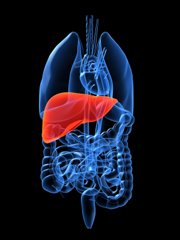Advertisment
Liver tissue 'reprogrammed' to make pancreas cells

Scientists in Germany have successfully reprogrammed liver cells, turning them into pancreas progenitor cells by altering a single gene.
The team behind the breakthrough, at the Max Delbrück Center for Molecular Medicine in the Helmholtz Association (MDC), believes the research results should make it feasible to help diabetic patients through cell therapy.
In patients suffering from type I diabetes, the immune system turns against patients’ own bodies and destroys a type of pancreatic cell called islet cells. Without these cells, the pancreas is unable to produce the hormone insulin and blood glucose rises, which leads to diabetic disease. At that point, patients need to inject insulin for the rest of their lives.
One way to provide a lasting help to type I diabetes patients may be to grow new pancreatic cells outside of the body. Dr Francesca Spagnoli, who led the project, has been pursuing the idea of reprogramming liver cells to become pancreatic cells. Her team has now succeeded in thrusting liver cells into an ‘identity crisis’.
By tweaking a single gene, Dr Spagnoloi reprogramed the liver cells to take on a less specialized state, and then stimulated their development into cells with pancreatic properties. The work was performed in animals and reported in Nature Communications.
A gene called TGIF2 plays a crucial role in the process. TGIF2 is active in the tissue of the pancreas but not in the liver. Dr Nuria Cerda Esteban, who was a PhD student in Dr Spagnoli’s lab, tested how cells from mouse liver behave when they are given additional copies of the TGIF2 gene.
In the experiment, cells first lost their hepatic (liver) properties, then acquired properties of the pancreas. The researchers transplanted the modified cells into diabetic mice. Soon after this intervention, the animals’ blood glucose levels improved, indicating that the cells indeed were replacing the functions of the lost islet cells. The results bring cell therapies for human diabetic patients one step closer to reality.
The next step is to translate the findings from the mouse to humans. The Spagnoli lab is currently testing the strategy on human liver cells in a project funded in 2015 by the European Research Council. “There are differences between mice and humans, which we still have to overcome,” Spagnoli says. “But we are well on the path to developing a ‘proof of concept’ for future therapies.”





